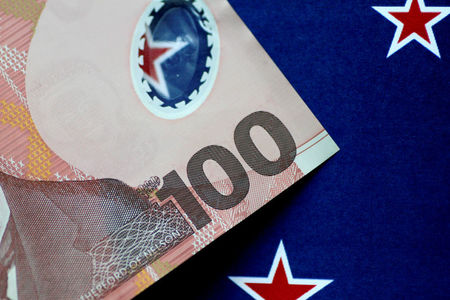Forex
UBS sees NZD/USD on shaky ground amid economic headwinds

UBS expressed caution regarding the New Zealand dollar (NZD), citing a challenging economic outlook and potential for underperformance against other major currencies.
The pair has been trading within the 0.59 to 0.62 range recently, with New Zealand’s relatively high-interest rates offering some support despite a weakening domestic economy.
Inflation in New Zealand remains high, influenced by factors such as rising unemployment, declining business confidence, and ongoing cost-of-living pressures that impact discretionary spending.
However, a slight recovery in dairy prices presents a potential upside to industry forecasts for the years 2024-2025.
The Reserve Bank of New Zealand (RBNZ) maintained a hawkish stance at its latest meeting, surprising markets by considering a rate hike. The central bank also adjusted its Official Cash Rate (OCR) forward track, hinting at a higher likelihood of further monetary tightening.
Nevertheless, RBNZ Governor Adrian Orr, in a recent interview, played down the chances of another rate hike as long as inflation expectations stay anchored. The near-term Consumer Price Index (CPI) forecasts were revised upwards, and the anticipated return to the target inflation band of 1-3% year-on-year was postponed until the fourth quarter of 2024, with a projection of 2.9% year-on-year.
Economic growth projections for 2024 were reduced to 0.4% year-on-year from the previous 0.9%, with UBS’s estimate even lower at 0.3%. The forecast for 2025 was also trimmed to 1.8% year-on-year from 2.5% year-on-year.
The 2024 Budget announcement by the New Zealand government underscored future challenges, with weaker growth expectations and tax cuts leading to an anticipated NZD 13.4 billion deficit in fiscal year 2025, representing 3.1% of GDP, up from an earlier forecast of a NZD 6.1 billion deficit.
UBS predicts additional government bond issuance, which could push yields higher than their current 10-year forecast of 4%. Regarding interest rates, UBS expects a 25 basis point cut in November and a 50 basis point reduction in February 2025, with a projected terminal rate of 3.25% by the fourth quarter of 2025, down from the current 5.5%.
From an investment perspective, UBS anticipates the New Zealand dollar to lag behind most G10 currencies over the next 12 months. They also foresee a rise in the pair to around 1.15 over the same period, suggesting a long position if the pairing drops to approximately 1.08 or lower.
While technical indicators show NZD is at the upper boundary of its Relative Strength Index (RSI) range and momentum has been positive, it appears to be waning. Key risks to the NZD/USD outlook include potential hawkish moves by the U.S. Federal Reserve, geopolitical tensions between the U.S. and China, and an unexpected rate hike by the RBNZ.
This article was generated with the support of AI and reviewed by an editor. For more information see our T&C.

 Forex3 years ago
Forex3 years agoForex Today: the dollar is gaining strength amid gloomy sentiment at the start of the Fed’s week

 Forex3 years ago
Forex3 years agoUnbiased review of Pocket Option broker

 Forex3 years ago
Forex3 years agoDollar to pound sterling exchange rate today: Pound plummeted to its lowest since 1985

 Forex3 years ago
Forex3 years agoHow is the Australian dollar doing today?

 Cryptocurrency3 years ago
Cryptocurrency3 years agoWhat happened in the crypto market – current events today

 World3 years ago
World3 years agoWhy are modern video games an art form?

 Commodities3 years ago
Commodities3 years agoCopper continues to fall in price on expectations of lower demand in China

 Economy3 years ago
Economy3 years agoCrude oil tankers double in price due to EU anti-Russian sanctions





















